The Galaxy Z Fold 5 and Pixel Fold represent the cutting edge of the folding phone market, but which one is better? We break down the details of each handset to help you decide.

At Samsung’s most recent Unpacked event, it announced new Galaxy Z Flip 5 and Galaxy Z Fold 5 phones (as well as some watches and tablets). Of those offerings, the Galaxy Z Fold 5 steals the spotlight in part for being the priciest device of the bunch at $1,799.99. It’s also an incremental but promising update to the Galaxy Z Fold 4, and we’re eager to see how it fares against the other recent major folding phone, Google’s $1,799 Pixel Fold.
We plan to publish an in-depth review of the Galaxy Z Fold 5 ahead of its Aug. 11 release date, but until then, here’s how its stacks up against the Pixel Fold on paper:

Samsung Galaxy Z Fold 5 vs. Google Pixel Fold: Price And Availability
Both the Galaxy Z Fold 5 and the Google Pixel Fold start at $1,799. The base models come with 12GB of RAM and 256GB of storage. You can upgrade to a 512GB version of the Pixel Fold ($1,919), while the Fold 5 offers both 512GB ($1,919.99) and 1TB ($2,159.99) versions. That last one is available exclusively through Samsung.
The Pixel Fold is available now, but the Z Fold 5 won’t hit store shelves until Aug. 11 (pre-orders are live).
Samsung Galaxy Z Fold 5 vs. Google Pixel Fold: Design
If you look at the Galaxy Z Fold 5 and the Pixel Fold side by side, the differing design philosophies are immediately apparent.
The Galaxy Z Fold 5 retains the thin-and-tall, 6.2-inch display of its predecessor, which can sometimes be a pain for typing and other tasks. Meanwhile, the Pixel Fold’s 5.8-inch outer screen is much more like a traditional smartphone in size and shape. The Fold 5 is easier to hold though, because the wider Pixel Fold sometimes forces you to stretch your hand uncomfortably.
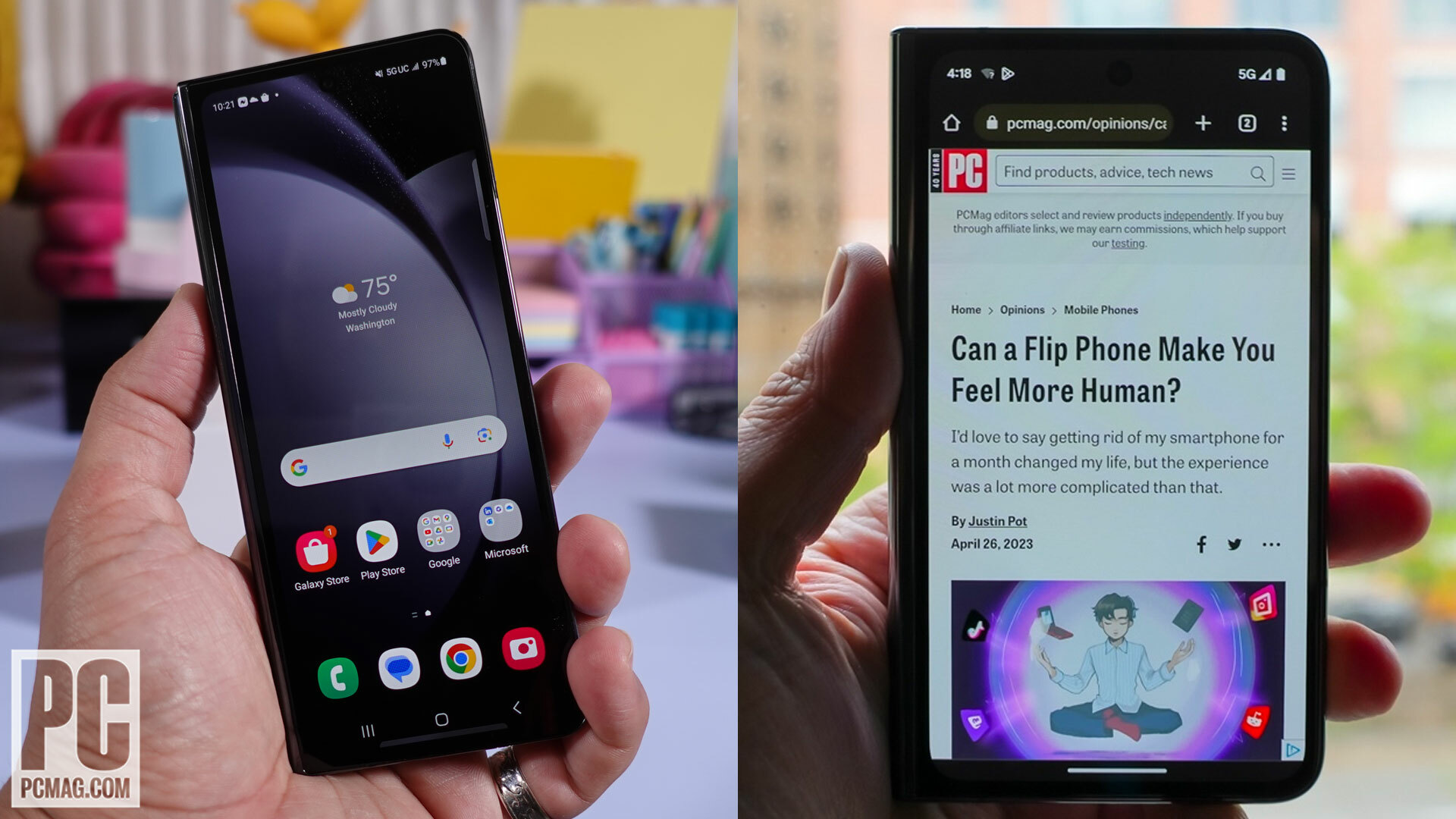
The Fold 5 has smaller and less noticeable bezels on its outer and inner screens than the Pixel Fold, which wastes a lot of space between the hinge and the left part of the screen. The hinge on the Z Fold 5 is very responsive and seemingly requires less force to open than the one on the Pixel Fold; both should last for around 200,000 folds. Speaking of durability, each carries an IPX8 rating, which means they can survive a splash in the pool but not an official amount of dust ingress. Both phones use durable aluminum, but the Fold 5 opts for Corning Gorilla Glass Victus 2 panels, an upgrade over the Corning Gorilla Glass Victus material on the Pixel Fold. Victus 2 can handle drops better than the older version, but both are equally resistant to scratches.
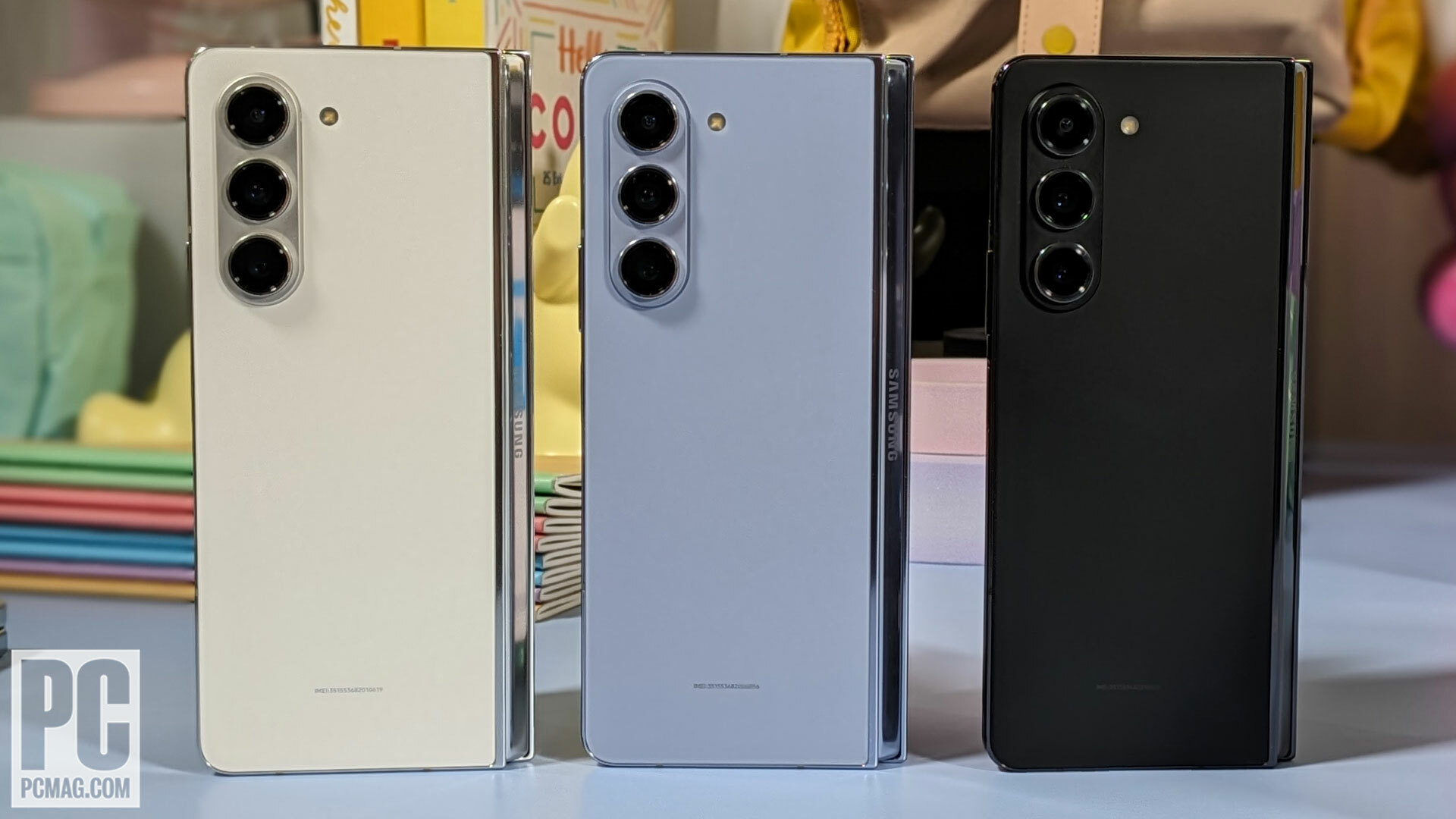
When it is folded, the Fold 5 comes in at 6.1 by 2.6 by 0.5 inches, whereas the Pixel Fold is considerably smaller at 5.5 by 3.1 by 0.5 inches (HWD). The size difference is apparent when you unfold the devices as well; the Fold 5 and Pixel Fold respectively expand to 6.1 by 5.1 by 0.2 inches and 5.5 by 6.2 by 0.2 inches.
The Z Fold 5 weighs slightly less at 8.92 ounces than the Pixel Fold (10.0 ounces). That difference might not seem substantial, but the Z Fold 5 feels noticeably lighter in real-world use. The Pixel Fold’s camera bar also means the device doesn’t feel as well balanced, since its weight can tip the phone in its direction. For reference, the Samsung Galaxy S23 Ultra weighs 8.3 ounces and the iPhone 14 Pro Max is 8.5 ounces; the Z Fold 5 is closer in weight to those big, single-screen devices than the Fold.
As for colors, the Pixel Fold comes in just black or white. The Z Fold 5 offers both of those colors, as well as icy blue, blue, or gray (the latter two are only available directly through Samsung). Both devices match the color of the hinge to the back panel for a cohesive look.
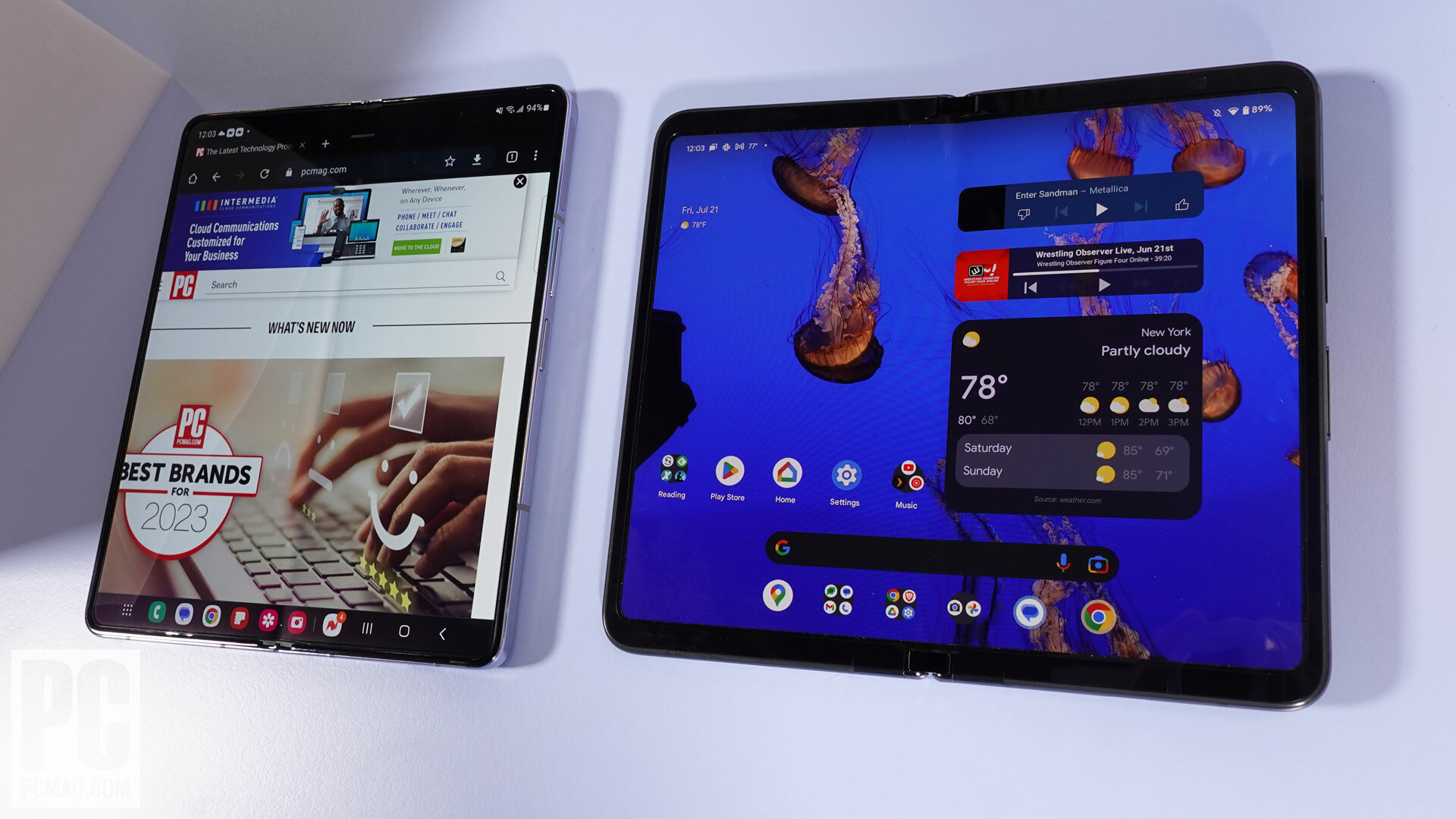
Samsung Galaxy Z Fold 5 vs. Google Pixel Fold: Screens
As mentioned, the Z Fold 5 and Pixel Fold take different approaches to their outer screens. The Z Fold 5’s 6.2-inch, 23.1:9 outer screen has a resolution of 2,316 by 904 pixels, whereas the Pixel Fold’s 5.8-inch, 17.4:9 panel comes in at 2,092 by 1,080 pixels. Both are OLED displays with a refresh rate of up to 120Hz and near-identical pixel densities.
Both phones feature 7.6-inch OLED inner screens with refresh rates of up to 120Hz. The Z Fold 5 has a resolution of 2,176 by 1,812 pixels (for a density of 374ppi), whereas the Pixel Fold has a resolution of 2,092 by 1,080 pixels (408ppi). That difference isn’t too noticeable in real-world use, but the crease is. Because the Fold 5 is taller than it is wide when it is unfolded, the crease is larger than the one on the Pixel Fold (which is wider than it is tall).
The Z Fold 5’s inner screen outshines that of the Pixel Fold with a peak brightness of 1,750 nits compared with 1,450 nits. That said, both can handle direct sunlight quite well. The displays also offer vivid and accurate enough colors that the crease virtually disappears if you aren’t specifically looking for it.
The inner display for the Z Fold 5 can do something the Pixel Fold can’t—it supports a real stylus, the optional S-Pen Fold Edition ($54.99). If you like to write or draw on your screen, the Z Fold 5 is the way to go.
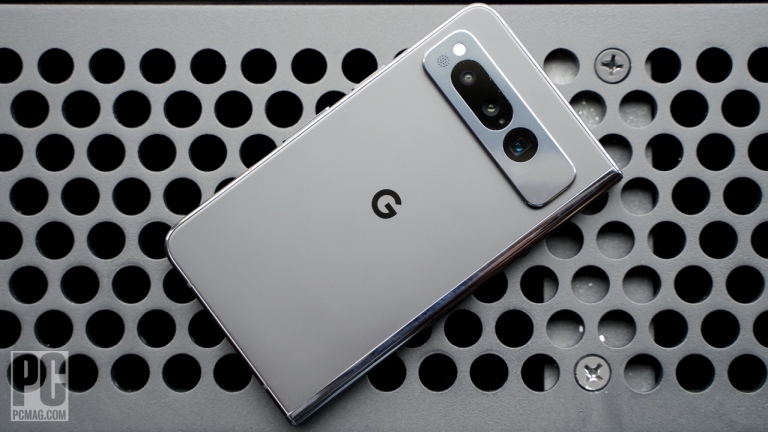
Samsung Galaxy Z Fold 5 vs. Google Pixel Fold: Power
Samsung’s Z Fold 5 runs on the Snapdragon 8 Gen 2 for Galaxy chip, which first appeared alongside the Galaxy S23 lineup. Meanwhile, the Pixel Fold uses Google’s in-house Tensor G2 SoC, the same one as in the Pixel 7 and the Pixel Tablet. In terms of benchmarks like Geekbench or PCMark Work 3.0, Google’s Tensor G2 can’t keep up the Snapdragon 8 Gen 2 in terms of benchmark testing.
However, benchmarks don’t necessarily reflect how most people use their devices or account for any other specialties; Google’s Tensor G2 focuses on machine learning and natural language processing, for instance. And when we tested the Pixel Fold, it was more than powerful enough to run whatever apps we threw at it without slowdown, so we curious to see how the Z Fold 5 feels in comparison.
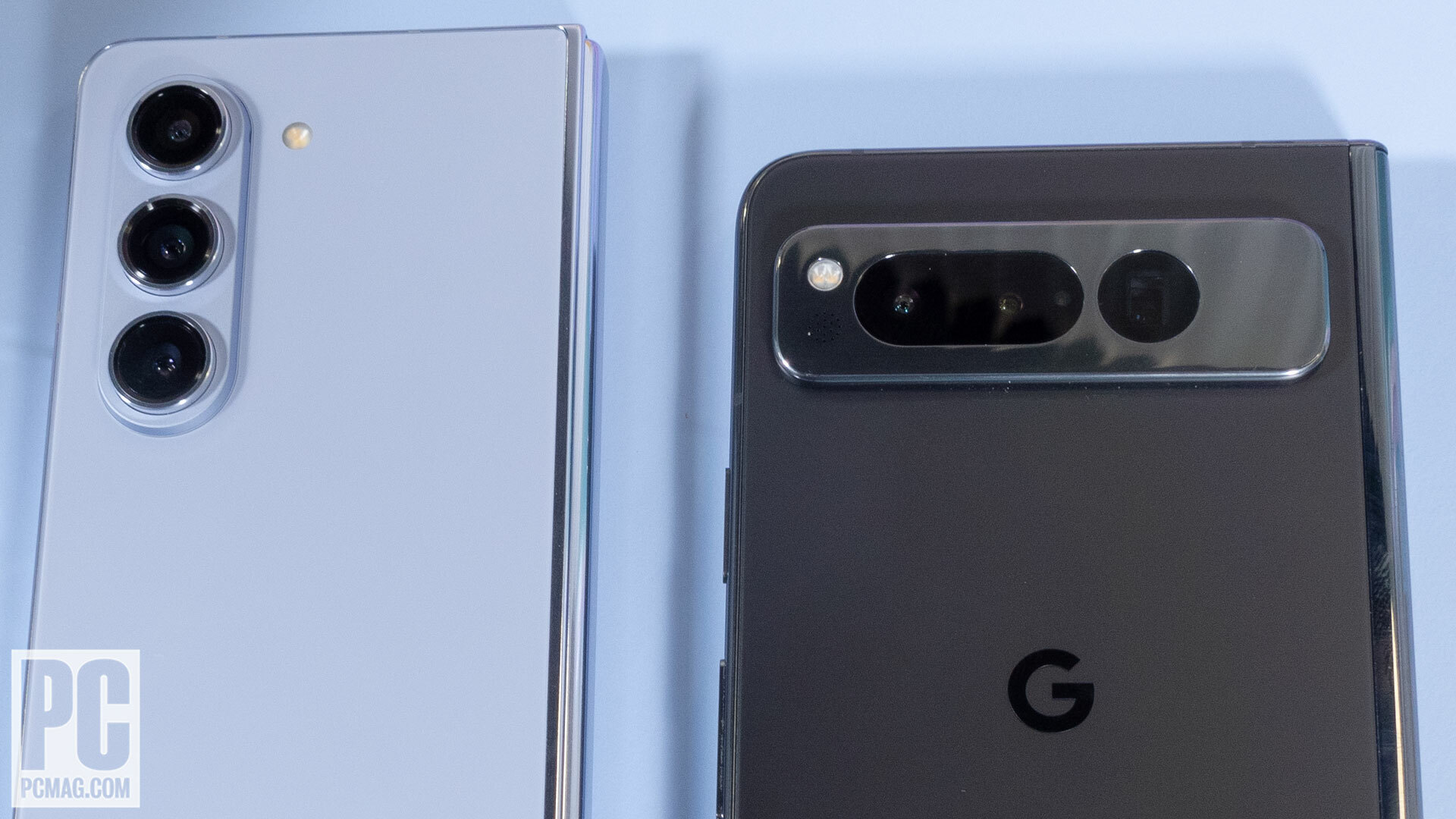
Samsung Galaxy Z Fold 5 vs. Google Pixel Fold: Cameras
The Z Fold 5 features a trio of optics on the rear: an f/2.2 12MP ultra-wide camera, an f/1.8 50MP wide-angle camera with optical image stabilization, and an f/2.4 10MP telephoto camera with a 3x optical zoom. Similarly, the Google Pixel Fold sports a 10.8MP ultra-wide camera with a 121.1-degree field of view, a 48MP wide-angle camera with optical image stabilization, and a 10.8MP telephoto camera with 5x optical zoom. Both phones can use pixel binning to output lower-resolution images (around 12 MP) from their main cameras with better detail.
We have yet to test the Z Fold 5’s cameras, but they use the same hardware as those on the Fold 4, so we mostly expect image processing improvements. Google’s Pixel Fold takes beautiful images with excellent detail even in low light, so Samsung has a tall task here.
The Z Fold 5’s camera on its outer display comes in at 10MP, whereas the Pixel Fold is 9.5MP. Both have a maximum aperture of f/2.2 and very similar angles of view. Again, we can’t say which is better until we’ve had a chance to review the Fold 5.
Samsung cleverly hides the inner display’s selfie cam under the screen; it’s a f/1.8 4MP camera with an 80-degree field of view. The Fold 4’s equivalent camera didn’t compare well with its other cameras, so we hope it has improved. The Pixel Fold’s f/2.0 8MP selfie camera has an 84-degree field of view and sits inside the screen bezel. If you want to take selfies that capture more of the room or a group, the Pixel Fold’s camera offers wider coverage, though we found images from it to be slightly washed out in testing.
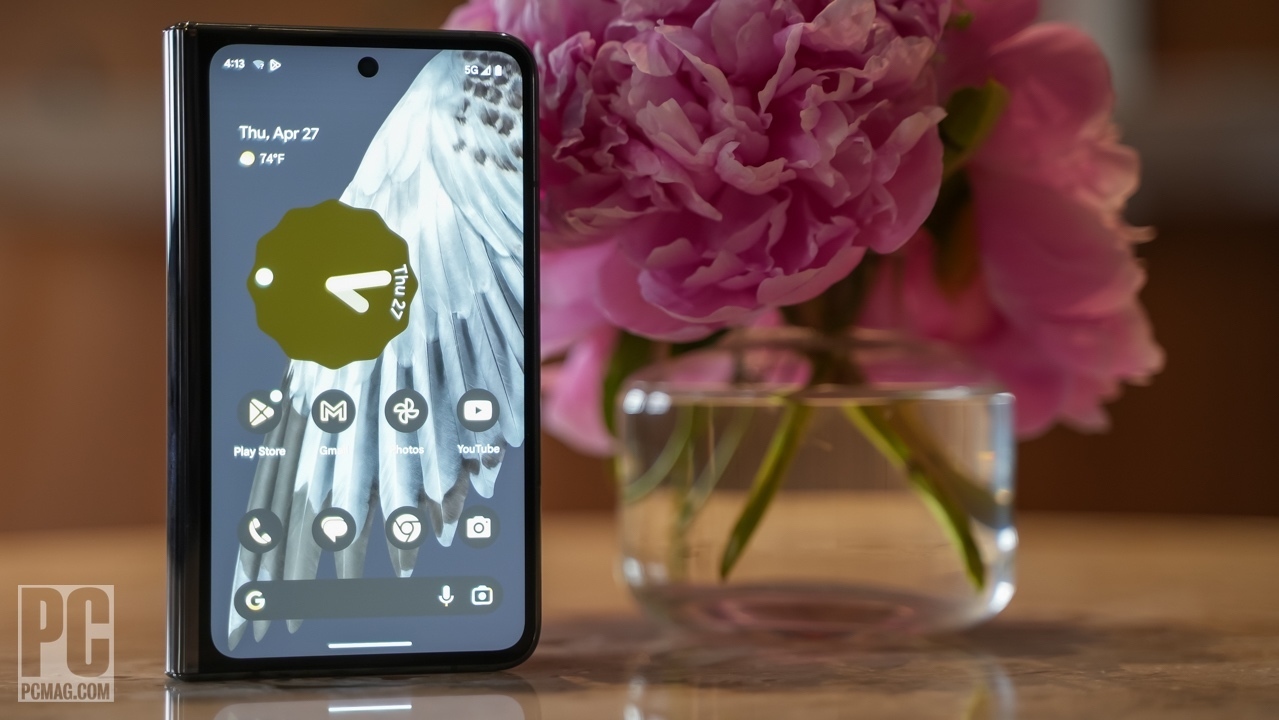
Samsung Galaxy Z Fold 5 vs. Google Pixel Fold: Battery Life And Charging
The Z Fold 5 has a 4,4000mAh battery that supports 25W fast charging and should charge to 50% charge in around 30 minutes. It also supports 15W wireless charging and reverse wireless charging for powering other devices.
The Pixel Fold comes with a 4,821mAh battery and supports faster 30W wired charging. However, its 7.5W wireless charging speed is considerably slower and you don’t get reverse wireless charging.
For reference, the Pixel Fold lasted 8 hours in our battery rundown test, while the previous-generation Z Fold 4 survived 11 hours and 30 minutes. We’ll find out whether Samsung still holds that advantage during our full review process.
Neither foldable comes with a charger in the box, so make sure you have one that lets you take full advantage of the top wired charging speeds.
Samsung Galaxy Z Fold 5 vs. Google Pixel Fold: Software
The Google Pixel Fold runs a pure version of Android 13, so it is the most straightforward version of the operating system. It will get three years of OS updates and at least five years of security updates. The Z Fold 5 runs Android 13 as well, but adds Samsung’s One UI skin. Samsung offers one more system update for its phone, but the same number of years of security updates.
Stock Android has gotten better at multitasking, but Samsung pushes the envelope by allowing up to three apps to run on the inner screen and two apps on the outer screen. Its DeX mode also enables you to use the Z Fold more like a traditional computer with resizable windows for your apps. For comparison, the Pixel Fold allows you to tile two apps on its inner screen and doesn’t officially support multiple apps on its cover screen; it also doesn’t offer anything comparable with DeX.
The Right Foldable for You?
Google and Samsung are both asking you to part with a lot of money for their foldables. Google seems to be going after Pixel fans who want to access a bigger screen, while Samsung appears to be courting power users who want absolutely everything in one device. Regardless of which category you fall into, stay tuned for our full review of the Z Fold 5 for definitive buying advice.
And if you can’t decide between the Galaxy Z Fold 5 and the Galaxy Z Flip 5, check out our detailed comparison.
